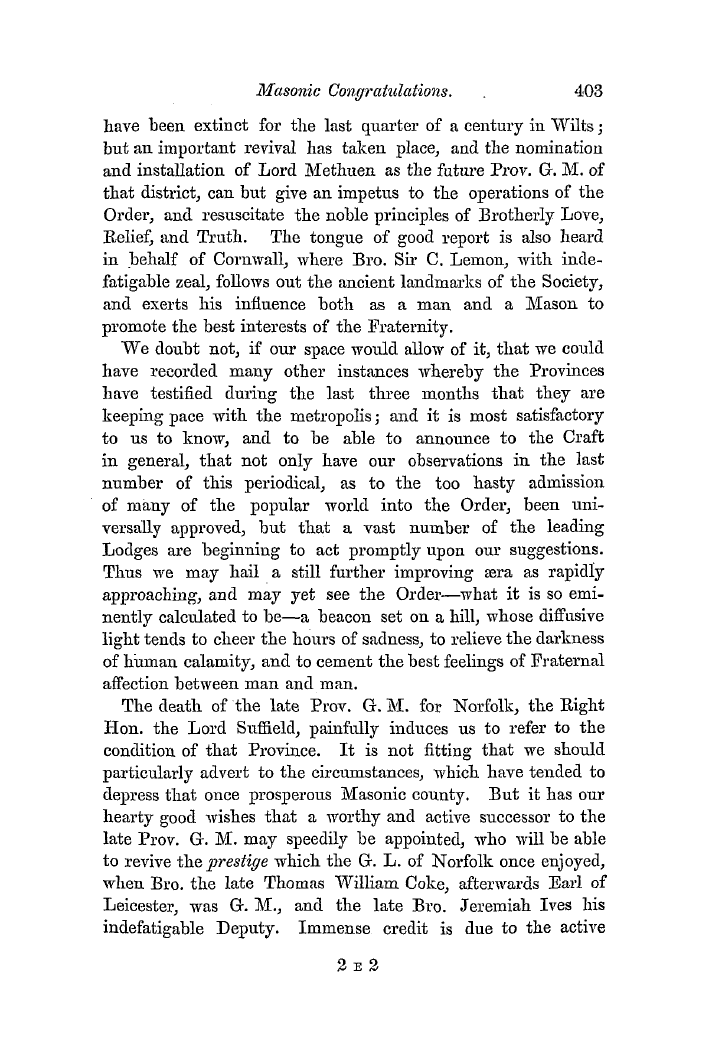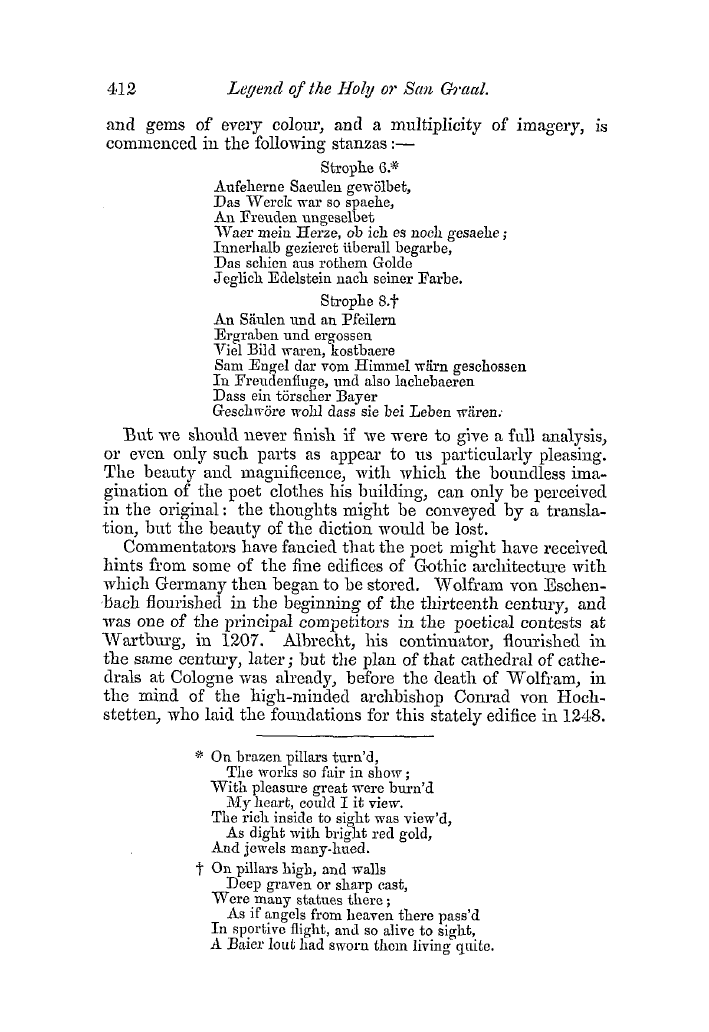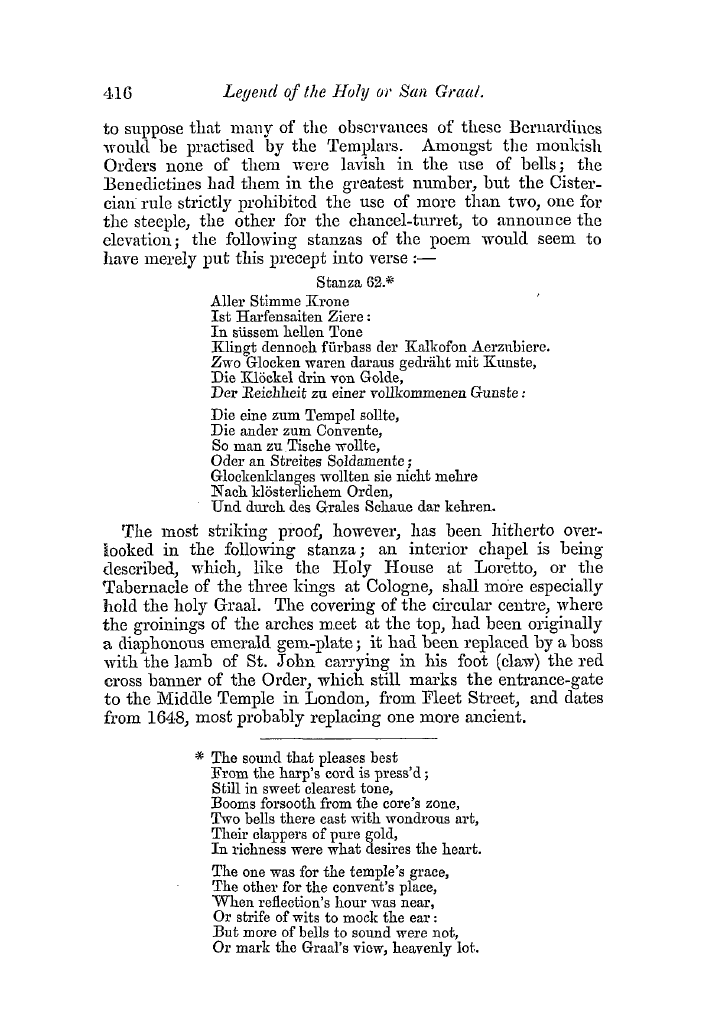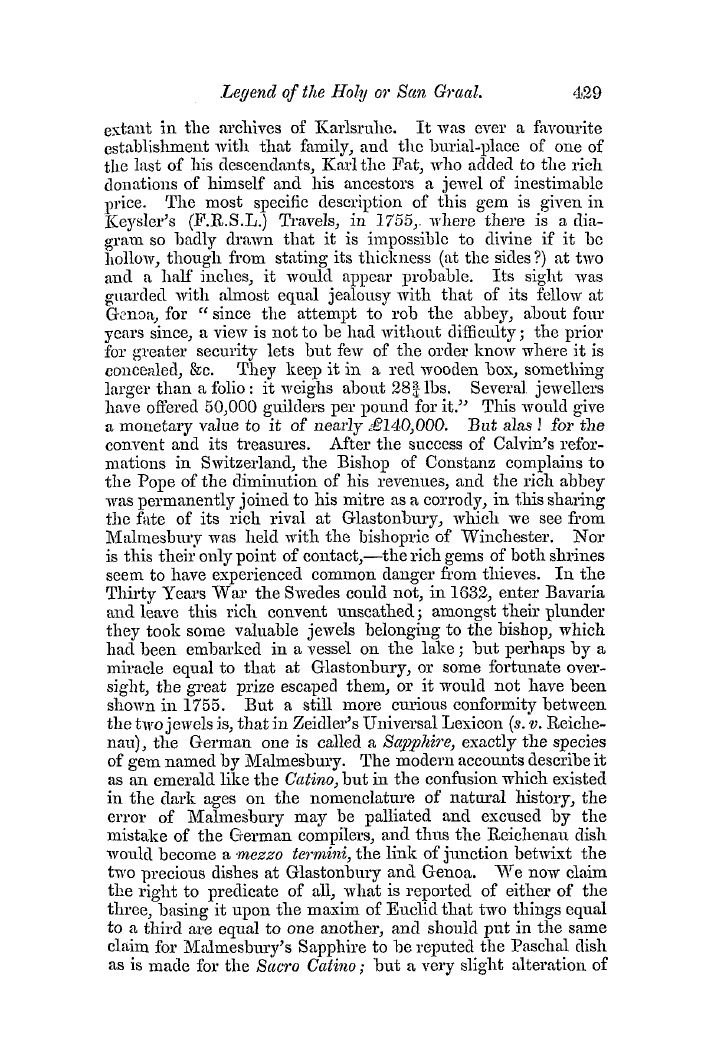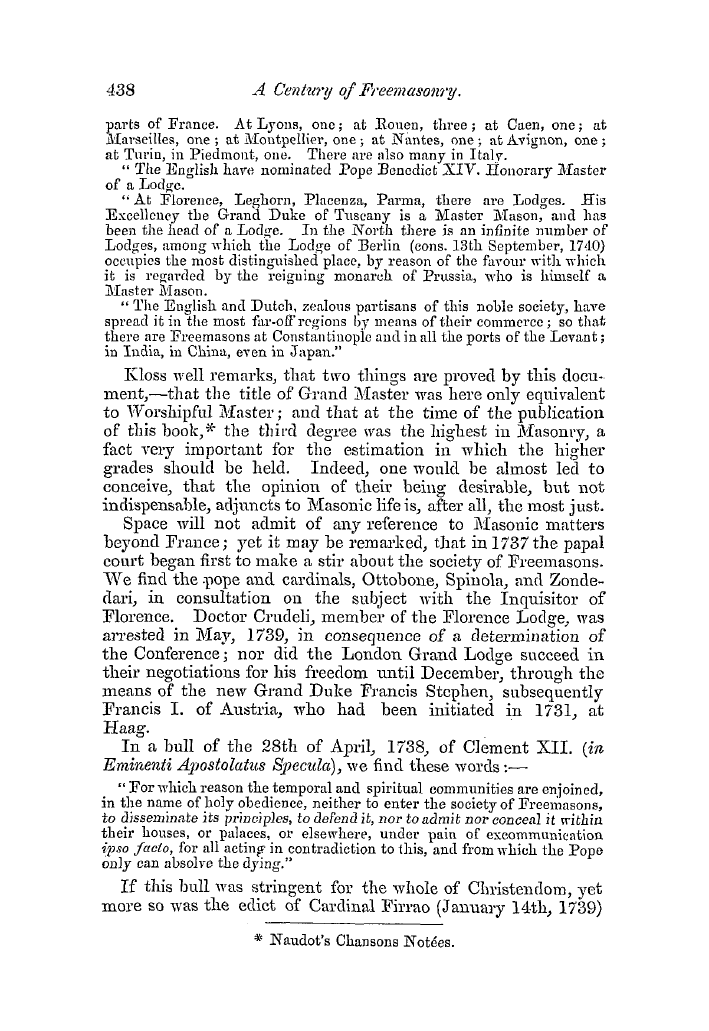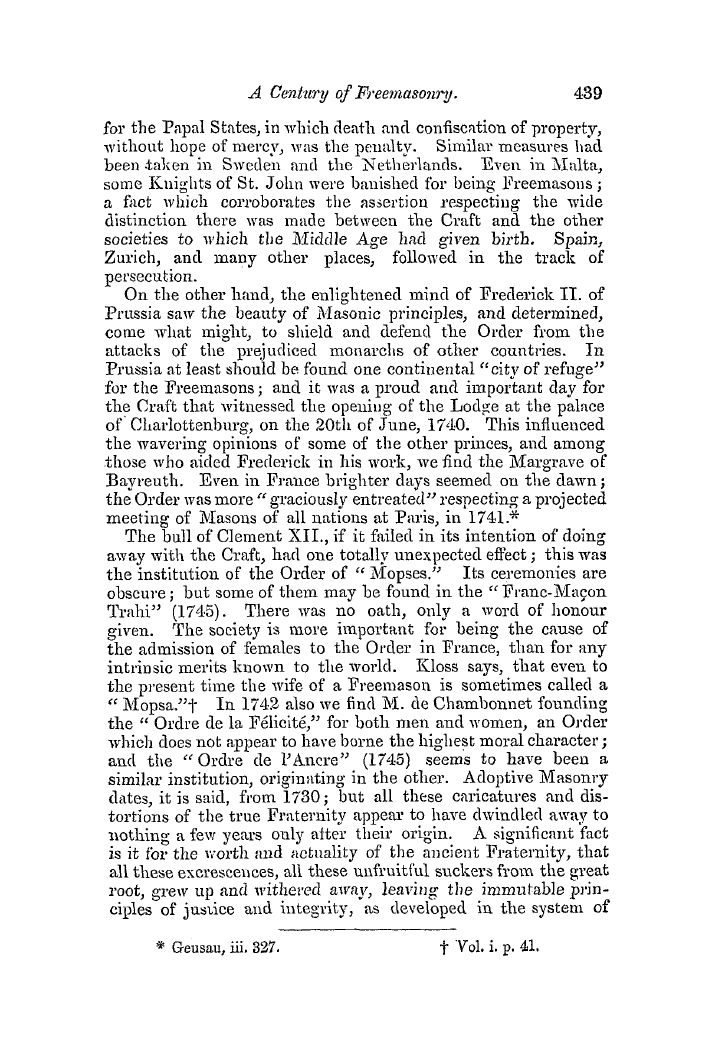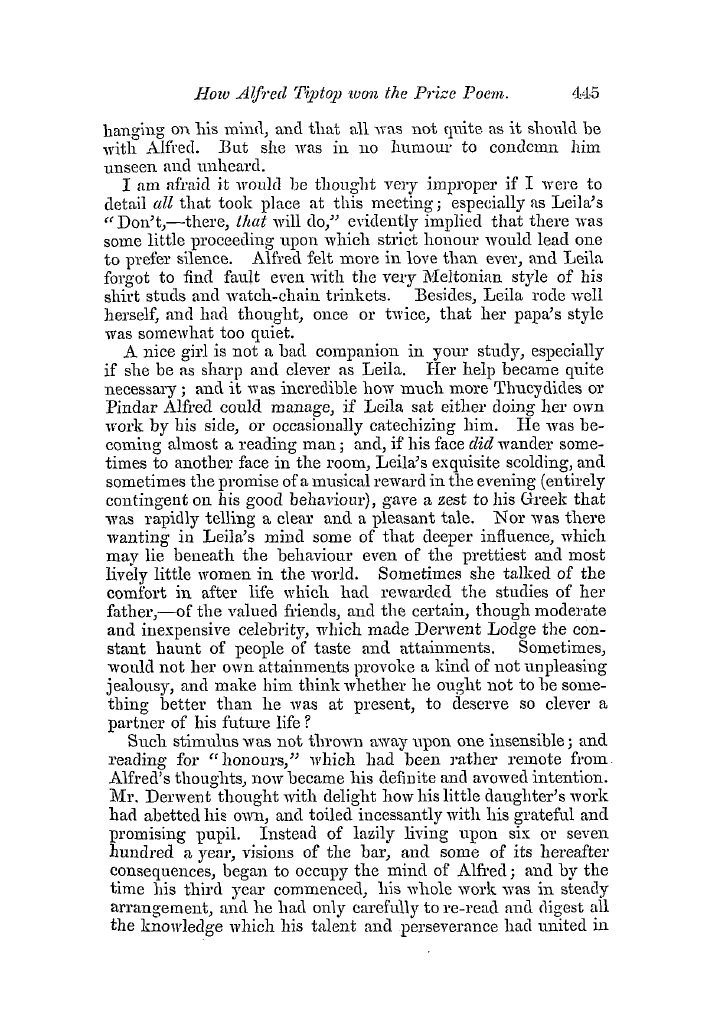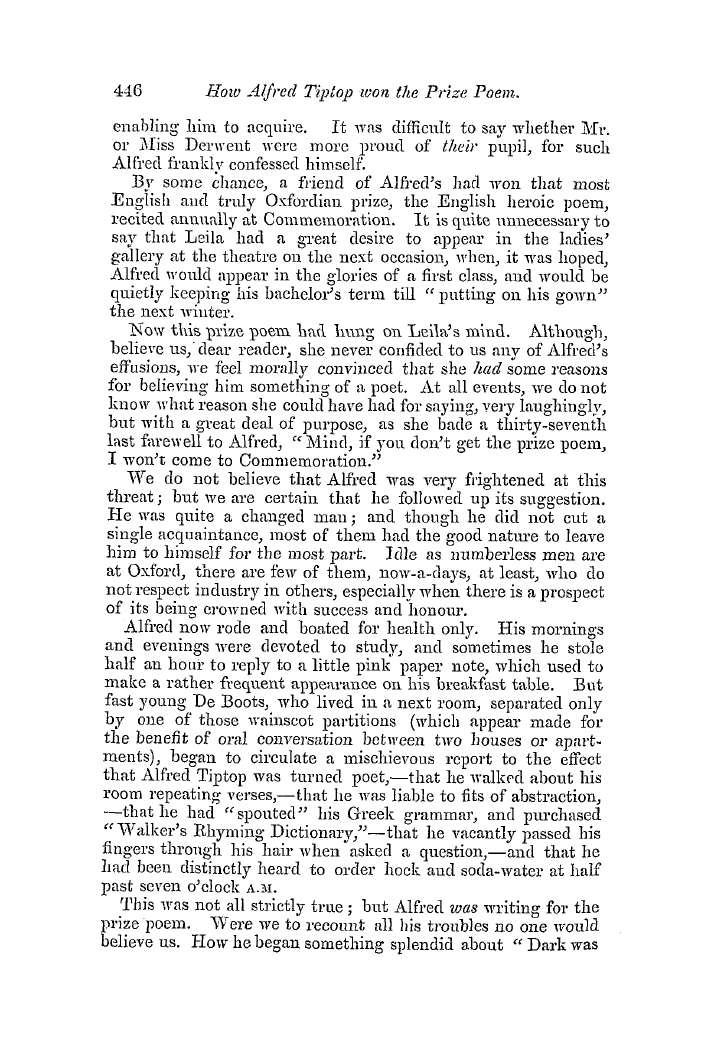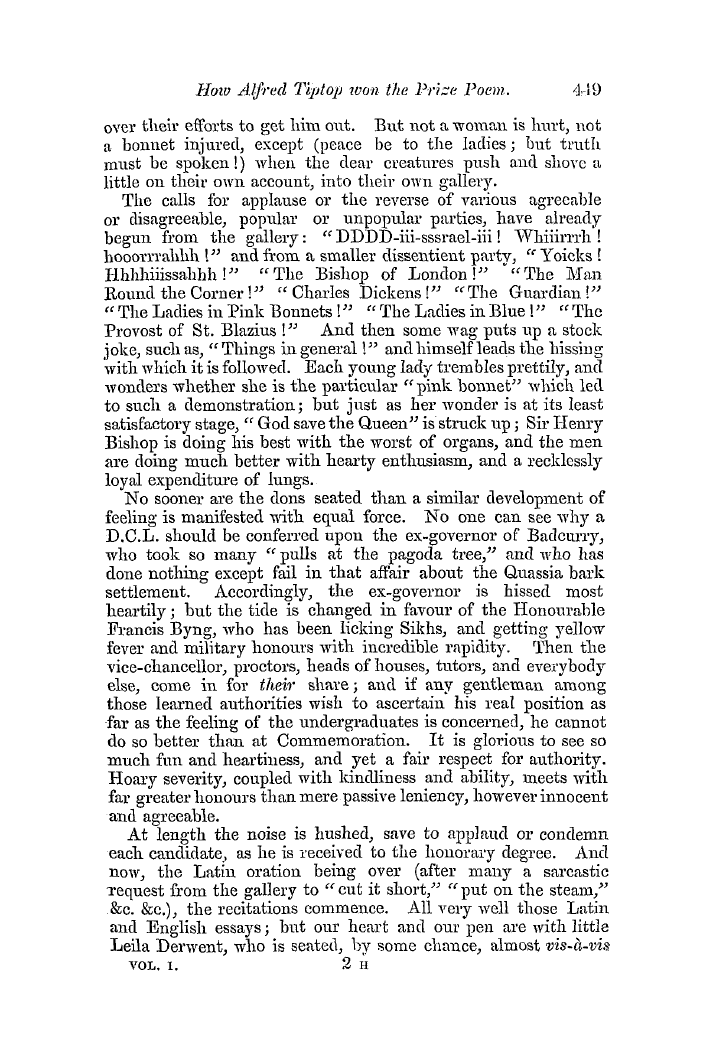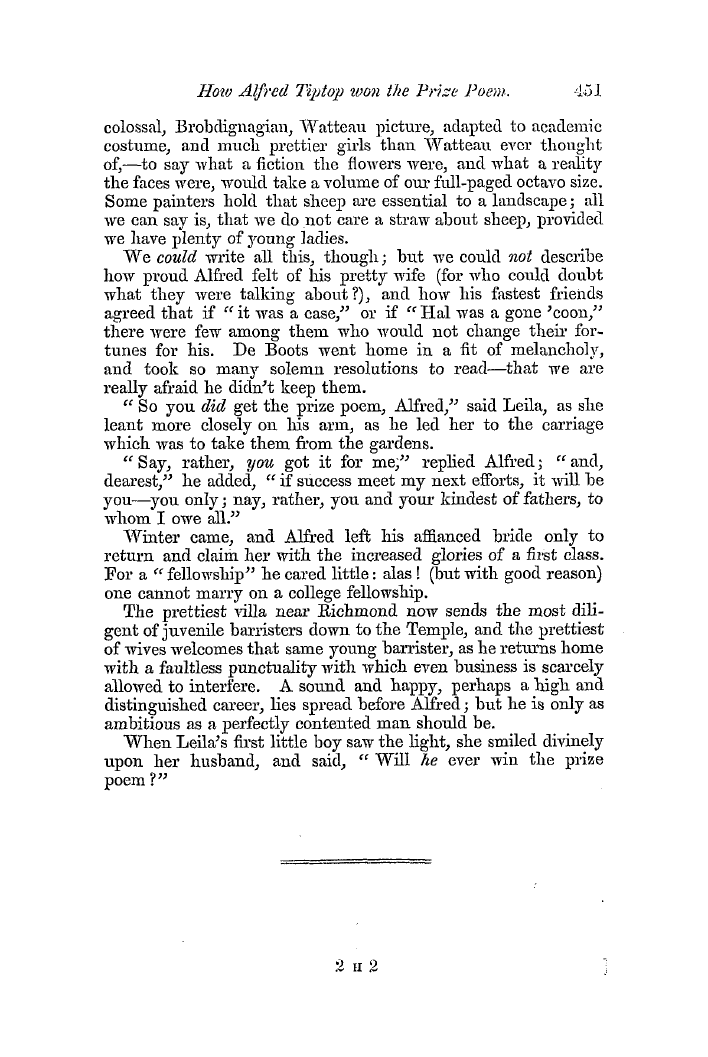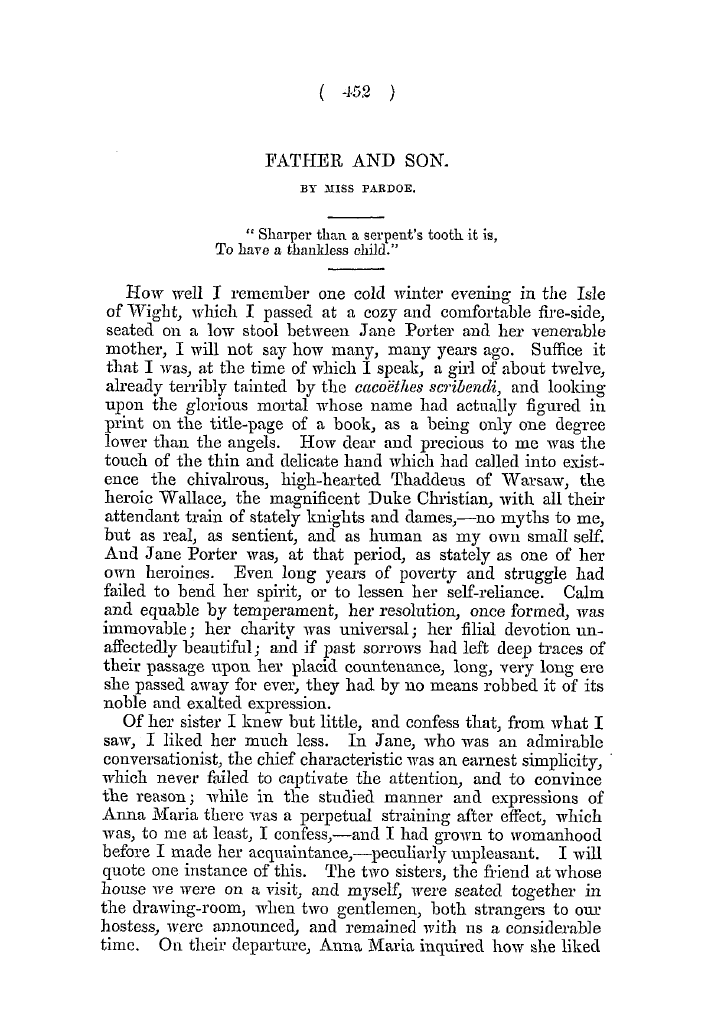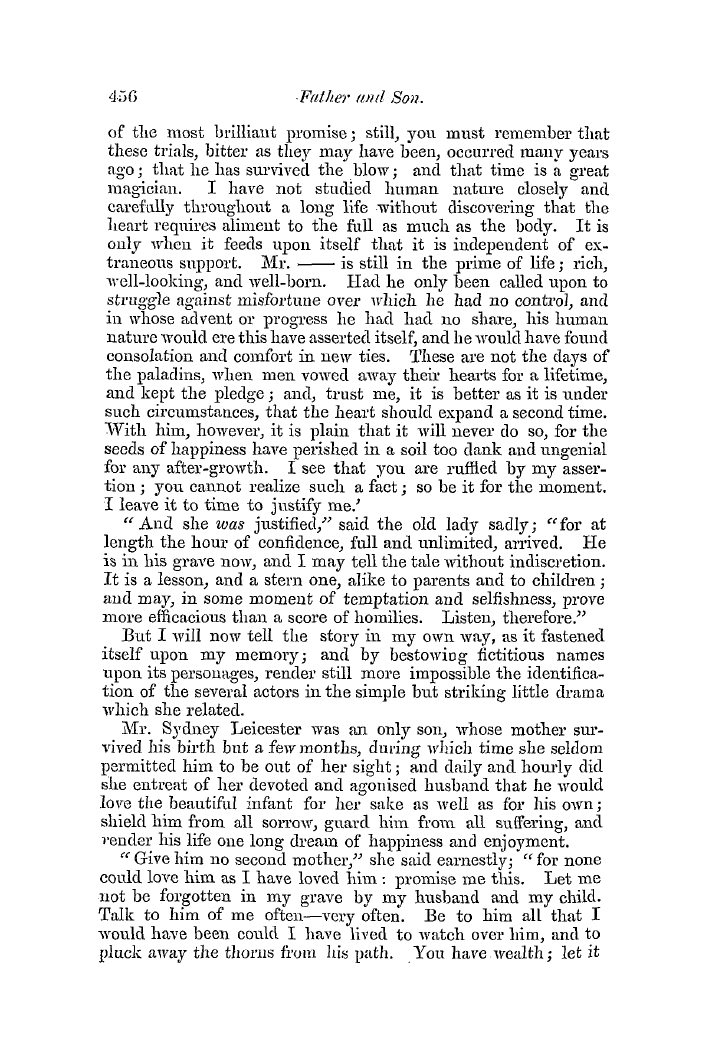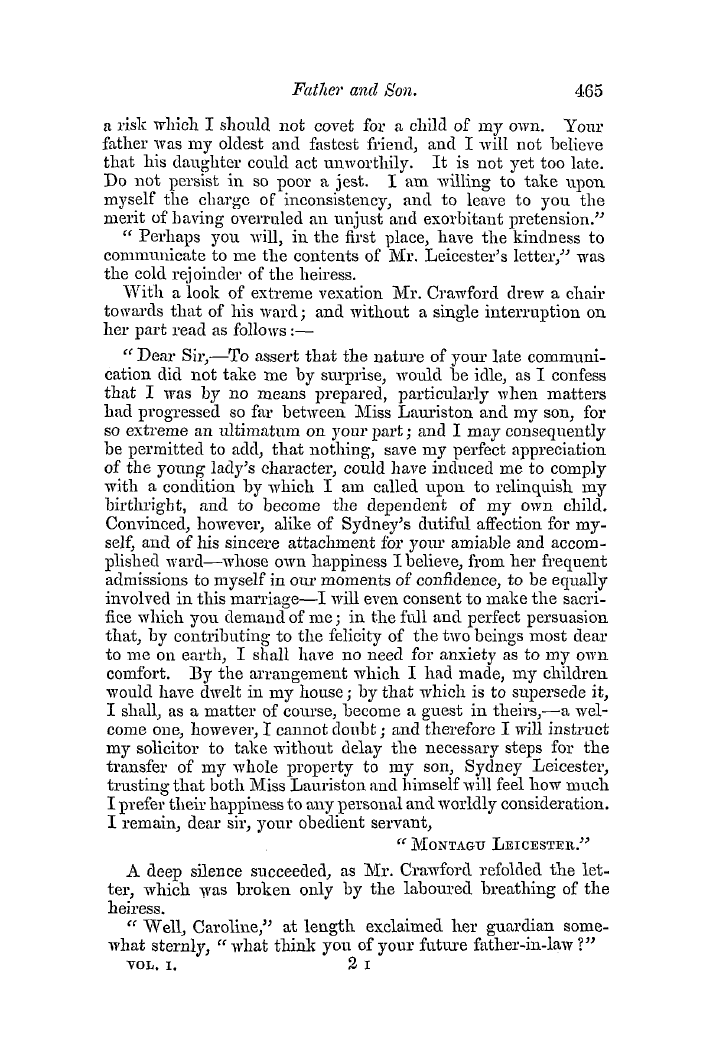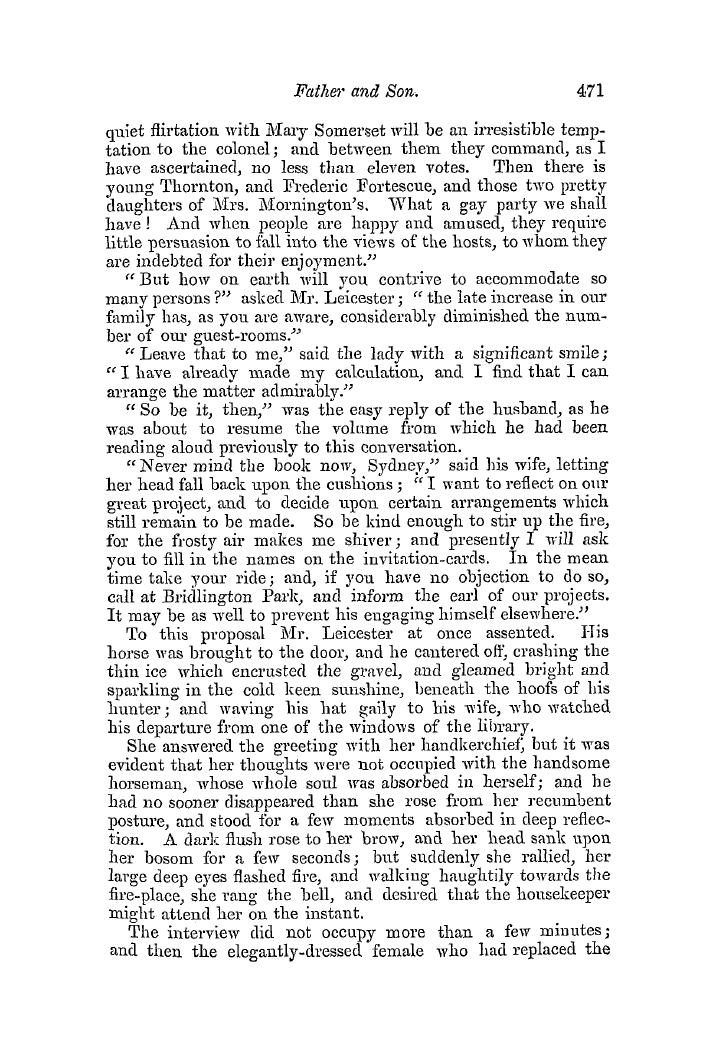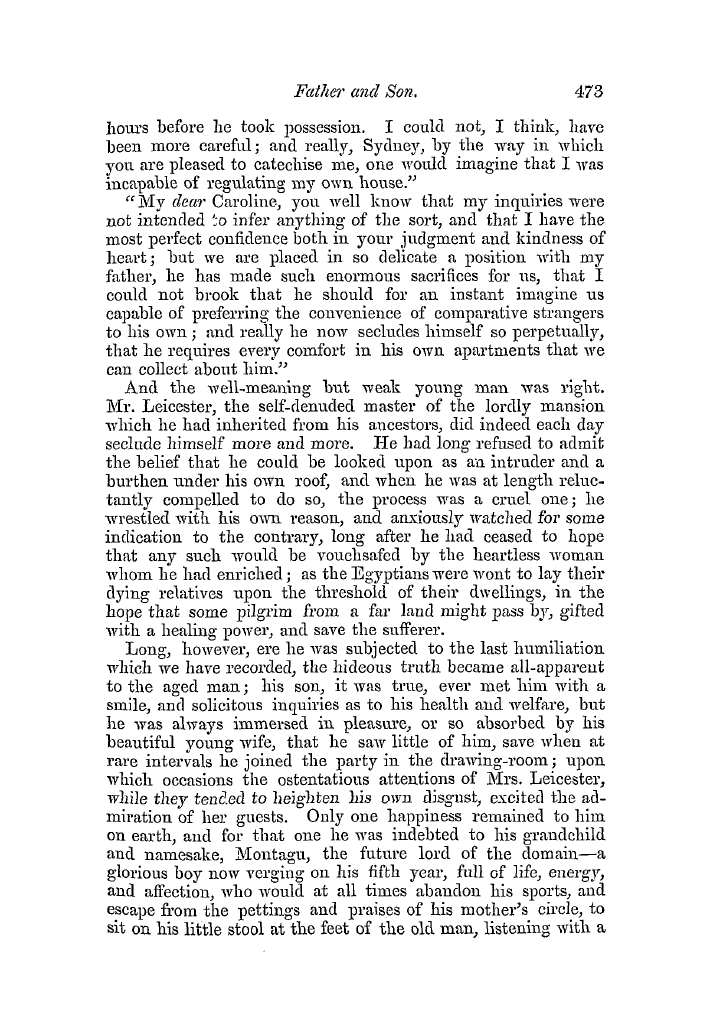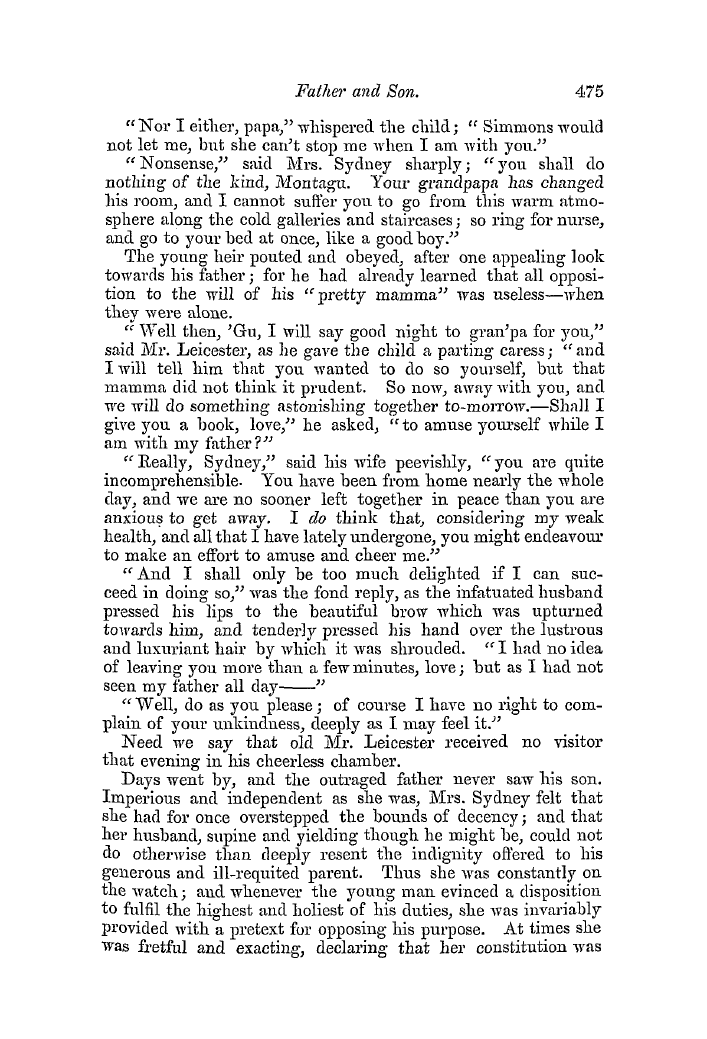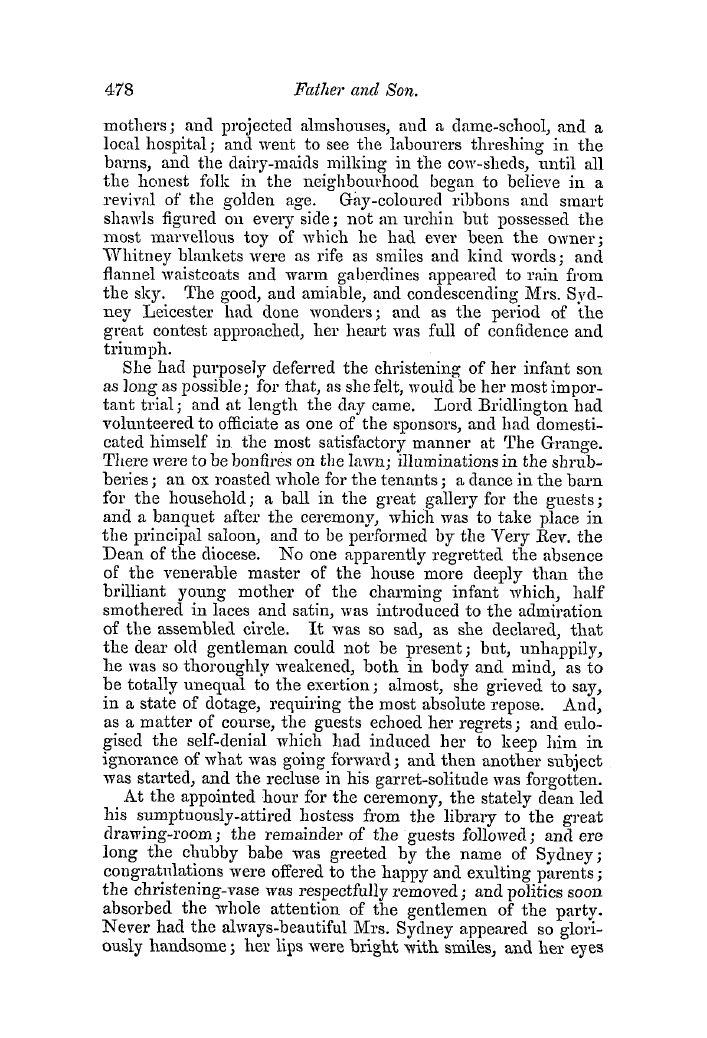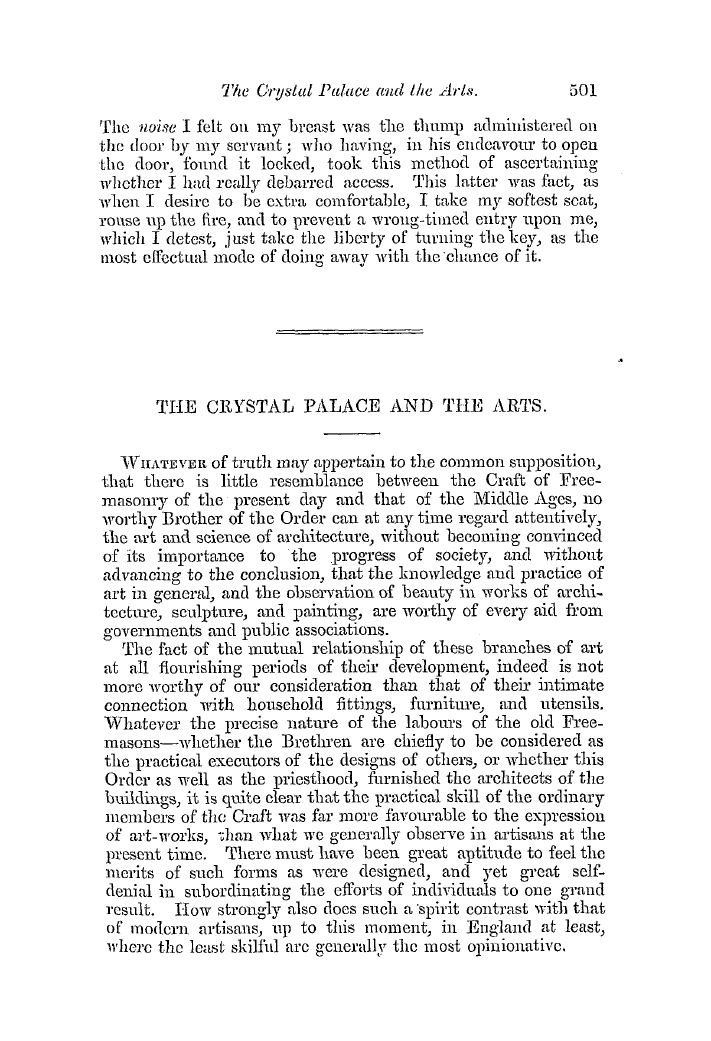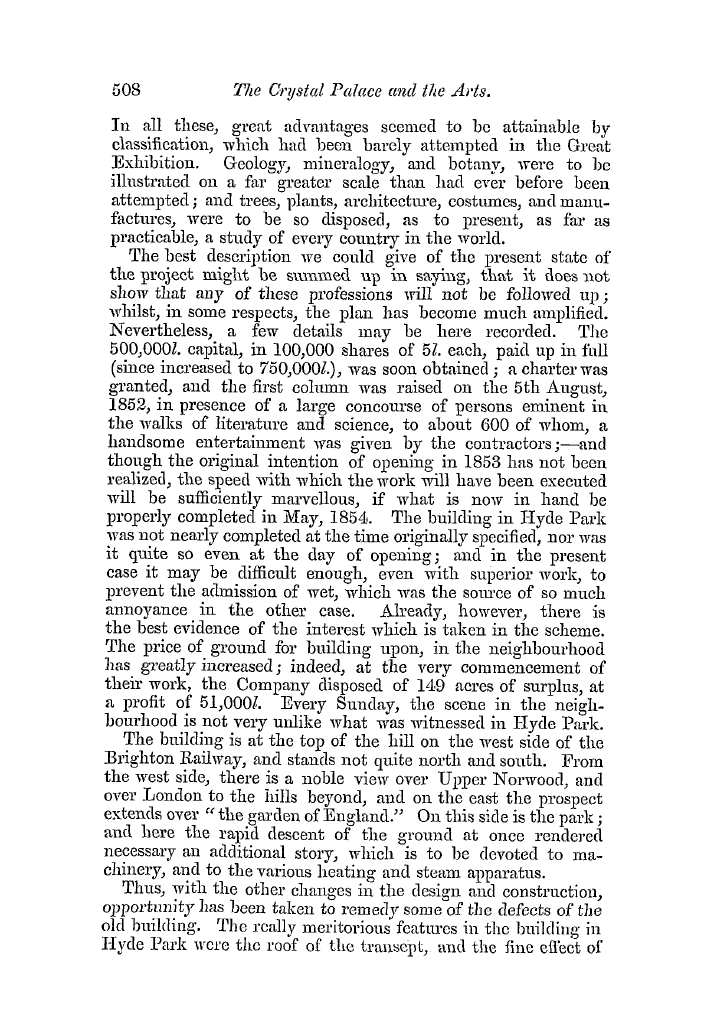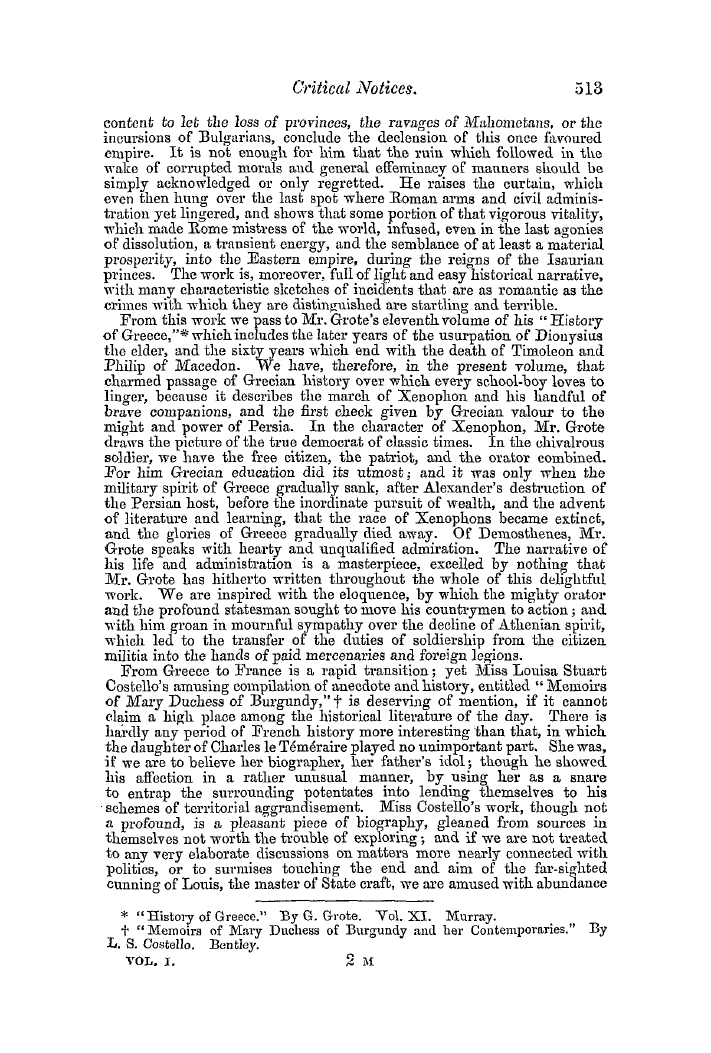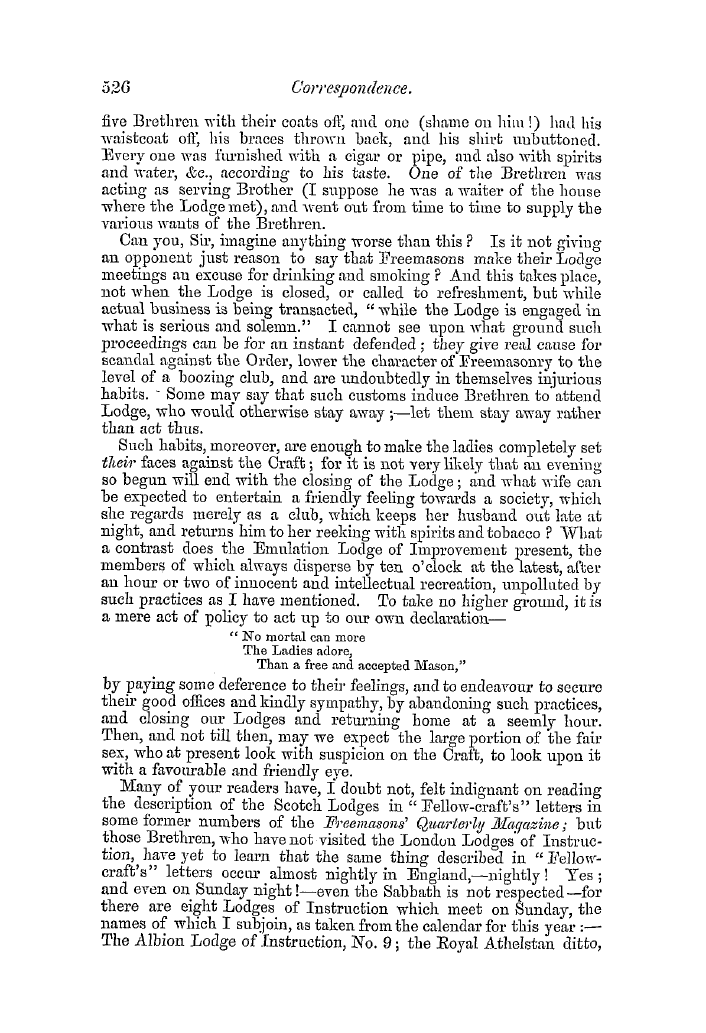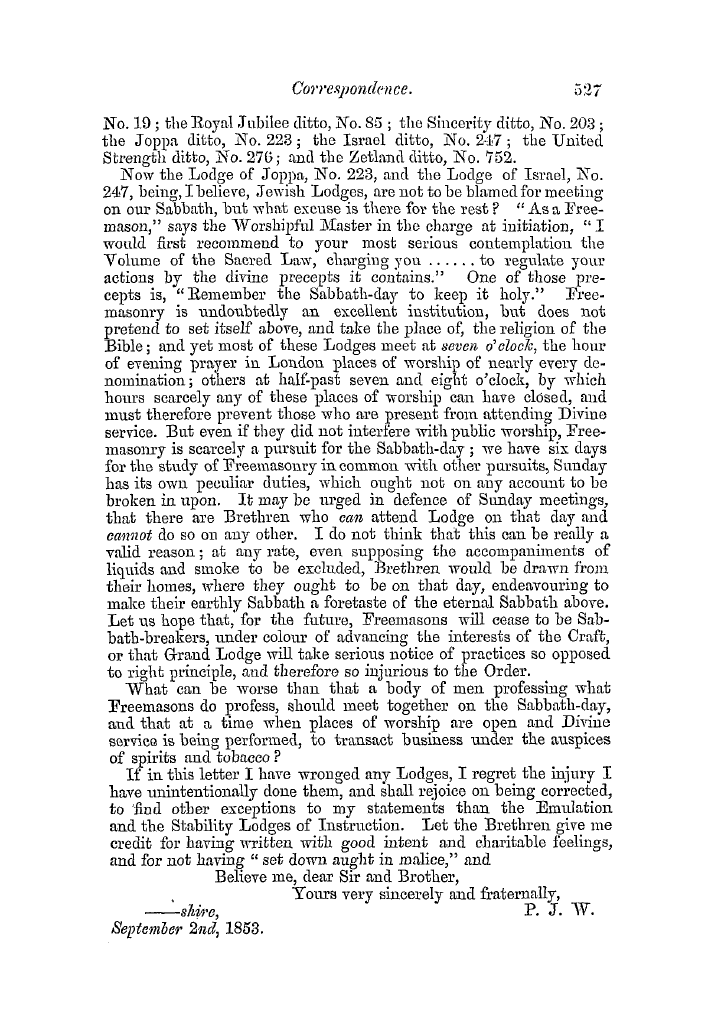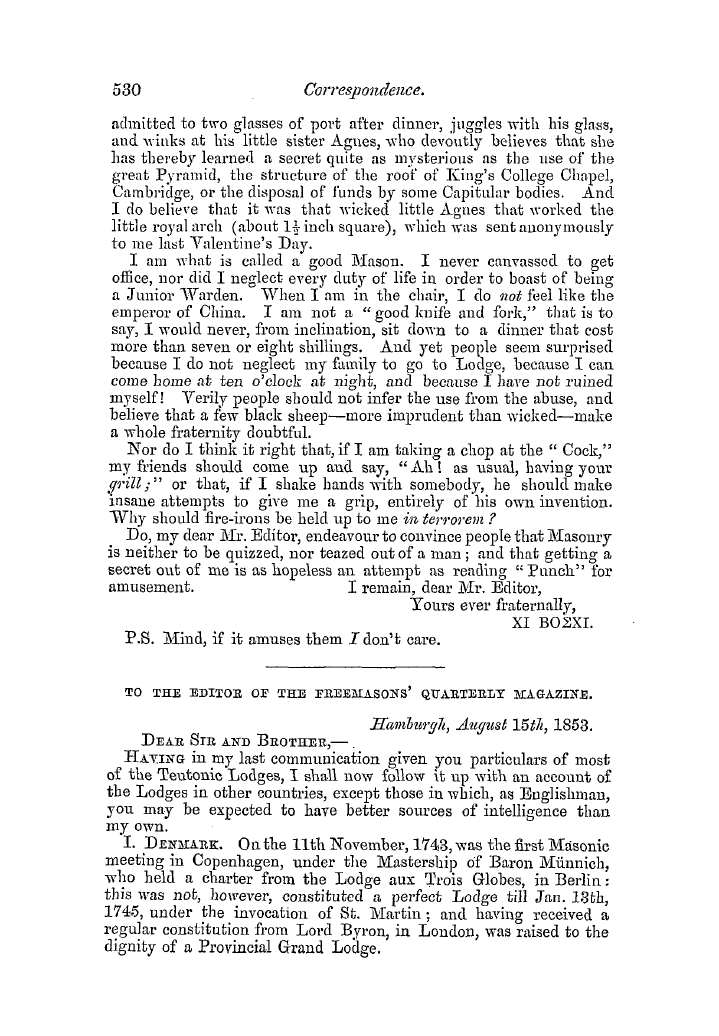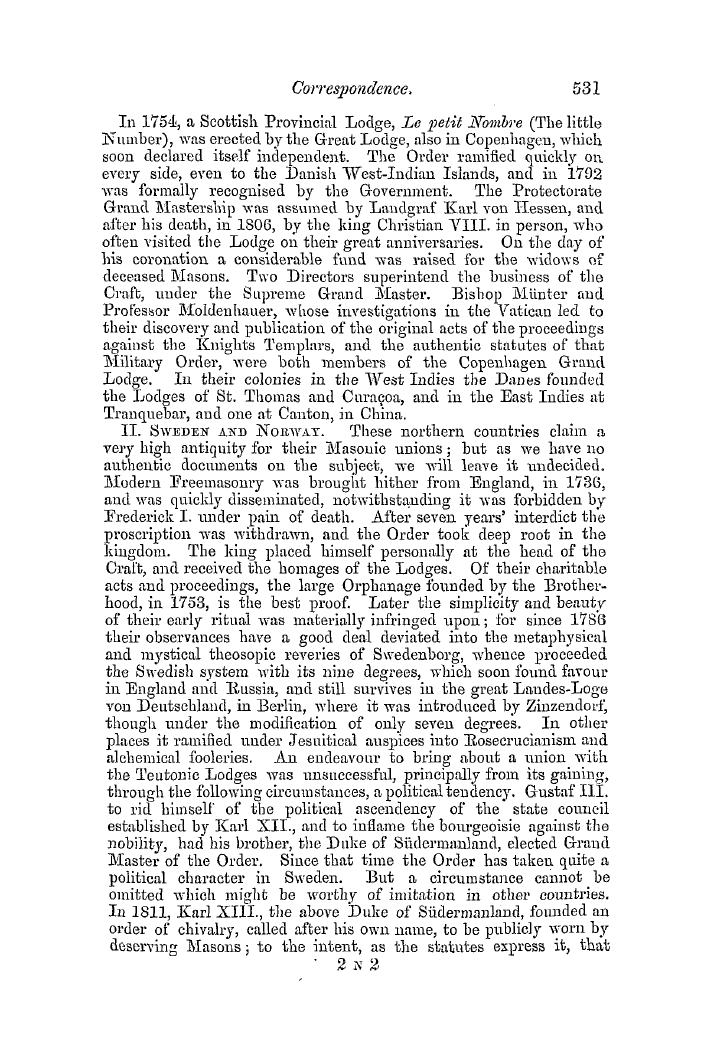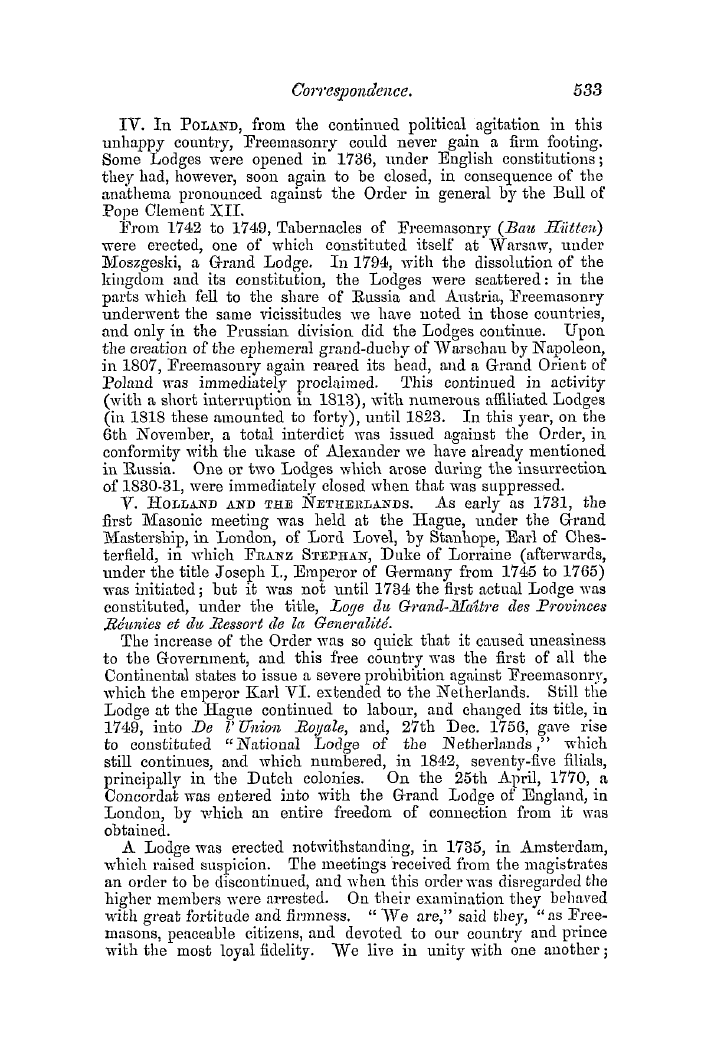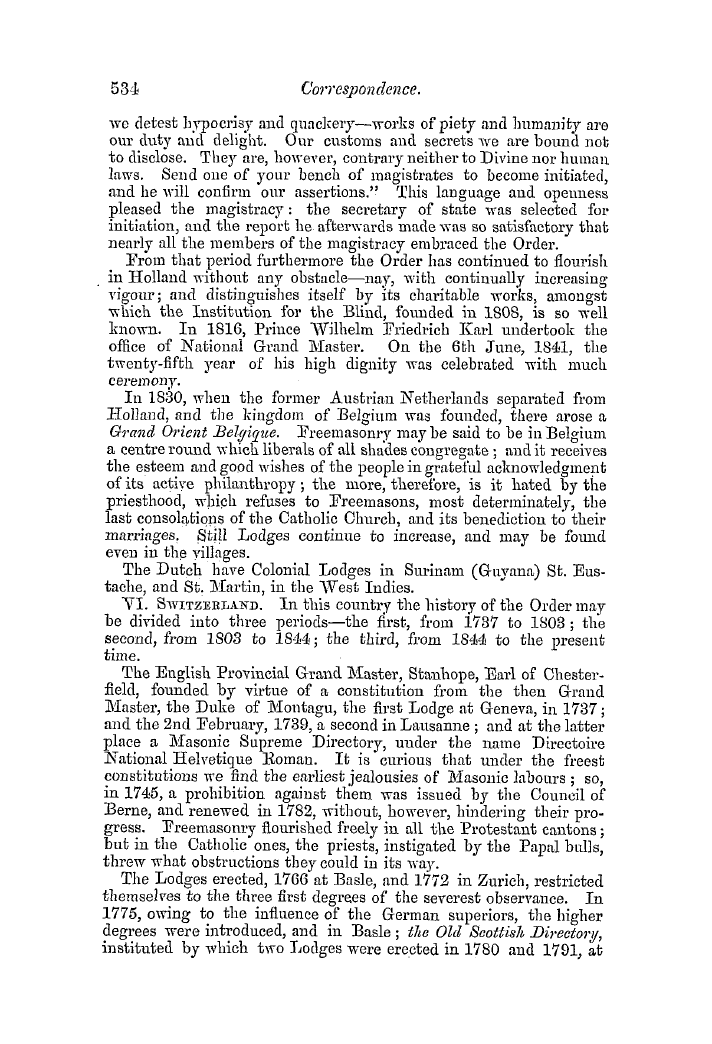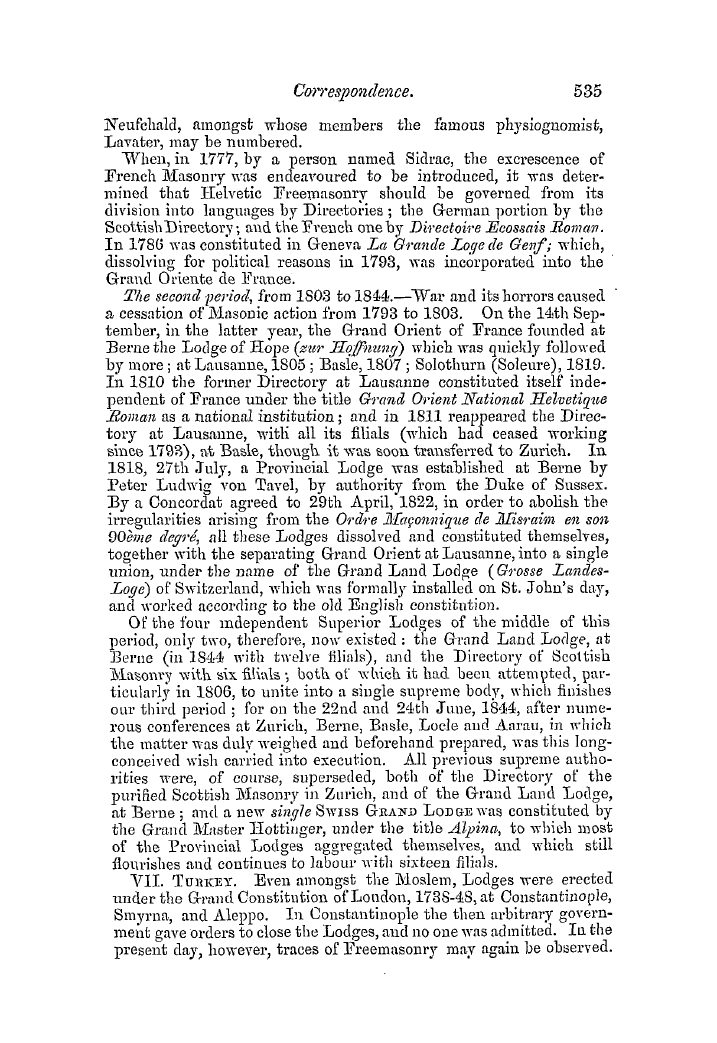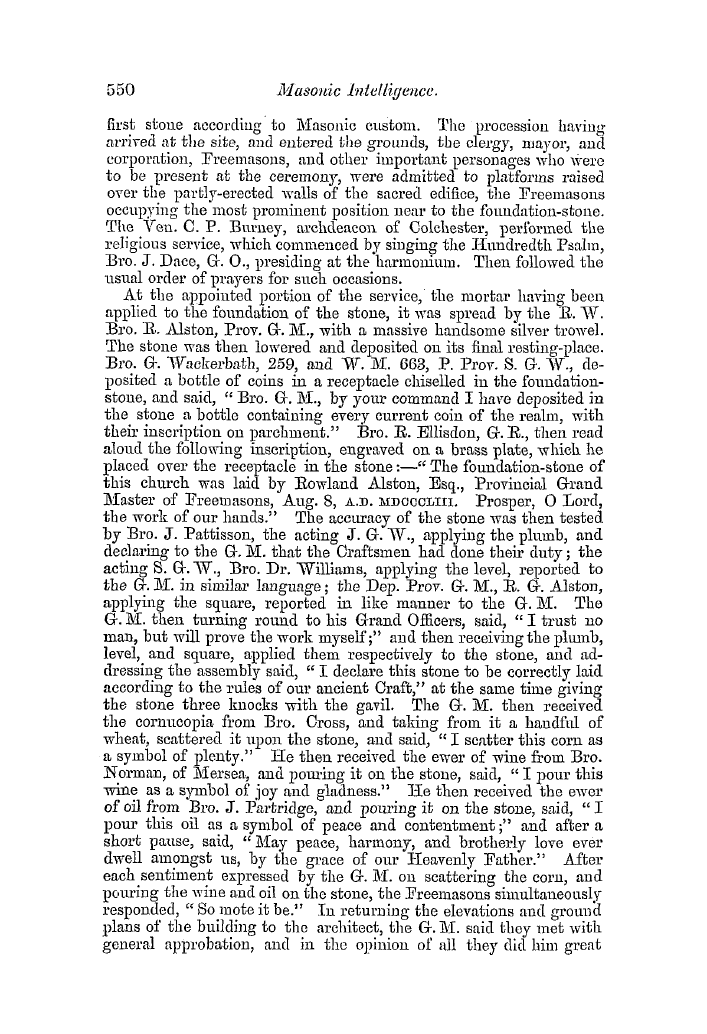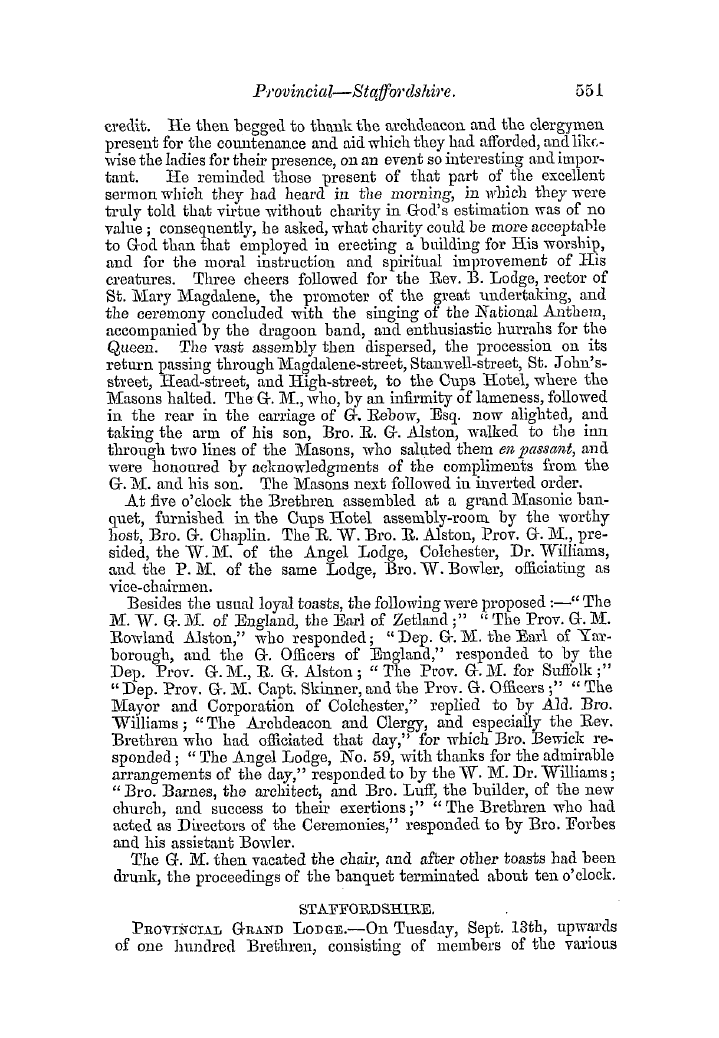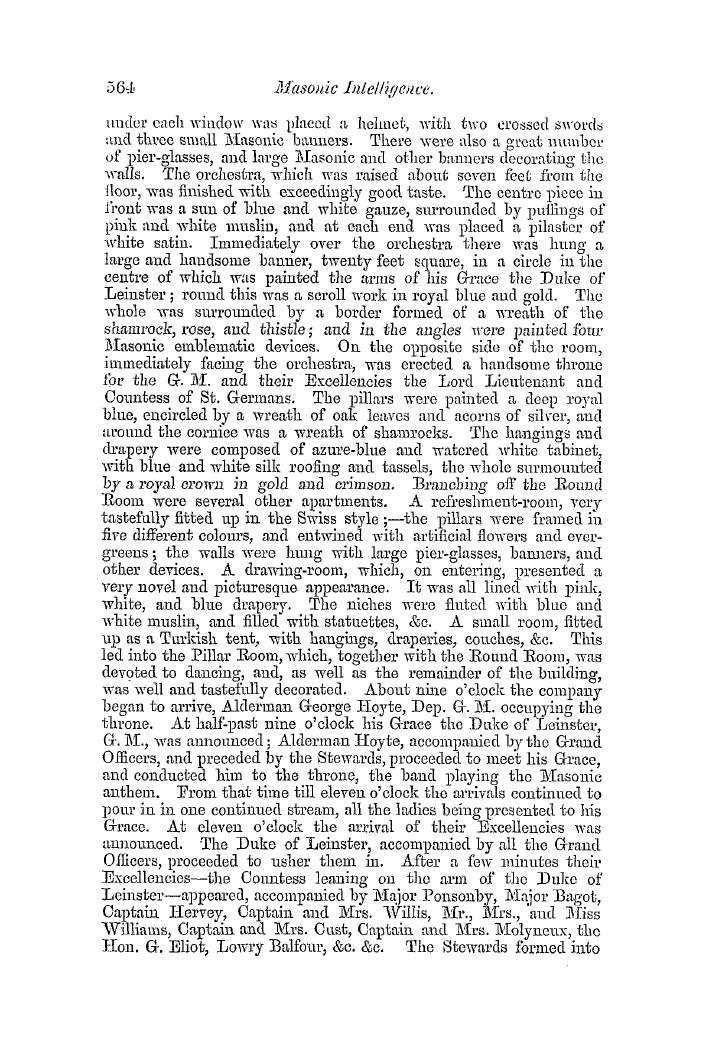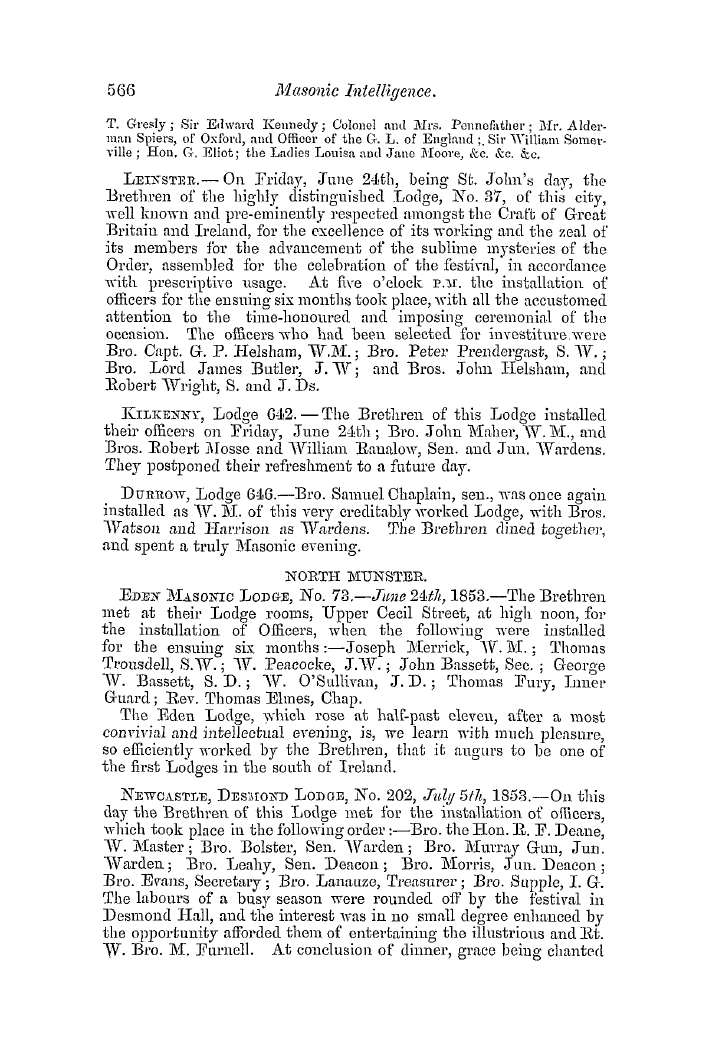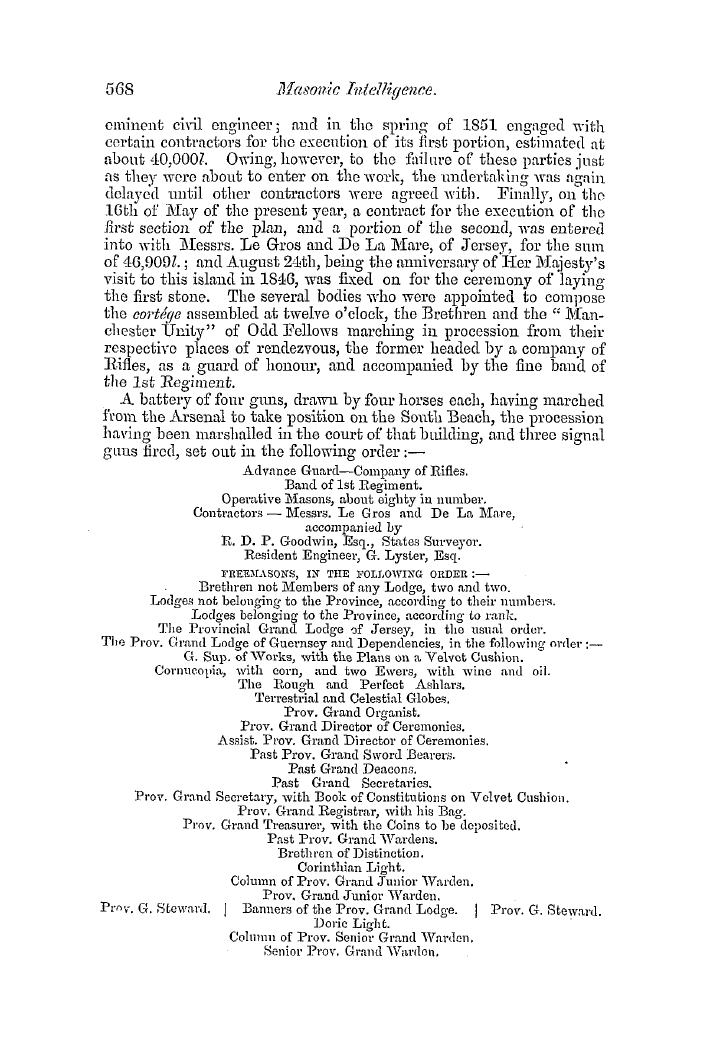-
Articles/Ads
Article ON THE LEGEND OF THE HOLY OR SAN GRAAL; ← Page 25 of 26 →
Note: This text has been automatically extracted via Optical Character Recognition (OCR) software.
On The Legend Of The Holy Or San Graal;
extant in the archives of Karlsruhe . It Avas ever a favourite establishment Avith that family , and the burial-place of one of the last of his descendants , Karl the Fat , AVIIO added to the rich donations of himself and his ancestors a jeAvel of inestimable price . The most specific description of this gem is given in Keysler ' s ( F . R . S . L . ) Travelsin 1755 . Avhere there is a
dia-, , gram so badly draAvn that it is impossible to divine if it be holloAv , though from stating its thickness ( at the sides ?) at tAvo and a hall' inches , it Avould appear probable . Its sight was guarded Avith almost equal jealousy with that of its fellow at Genoa , for " since the attempt to rob the abbey , about four years sincea view is not to be had Avithout difficulty ; the prior
, for greater security lets but feAV of the order knoAV where it is concealed , & c . They keep it in a red Avooden box , something larger than a folio : it Aveighs about 281 lbs . Several jeAvellers have offered 50 , 000 guilders per pound for it . " This would give a monetary value to it of nearly £ 140 , 000 . But alas 1 for the convent and its treasures . After the success of Calvin's
reformations in Switzerland , the Bishop of Constanz complains to the Pope of the diminution of his reA enues , and the rich abbey Avas permanently joined to his mitre as a corrody , in this sharing the fate of its rich rival at Glastonbury , Avhich we see from
Malrnesbury was held Avith the bishopric of Winchester . Nor is this their only point of contact , —the rich gems of both shrines seem to have experienced common danger from thieA es . In the Thirty Years War the SAvedes could not , in 1632 , enter Bavaria and leaA r e this rich convent unscathed ; amongst their plunder they took some valuable jeAvels belonging to the bishop , which
had been embarked in a vessel on the lake ; but perhaps by a miracle equal to that at Glastonbury , or some fortunate oversight , the great prize escaped them , or it would not have been shown in 1755 . But a still more curious conformity between the two jewels is , that in Zeidler ' s Universal Lexicon ( s . v . Reichenau ) , the German one is called a Sapphire , exactly the species
of gem named by Malrnesbury . The modern accounts describe it as an emerald like the Catino , but in the confusion which existed in the dark ages on the nomenclature of natural history , the error of Malrnesbury may be palliated and excused by the mistake of the Grerman compilers , and thus the Reichenau dish Avould become a -mezzo terminithe link of junction betwixt the
, two precious dishes at Glastonbury and Genoa . We now claim the right to predicate of all , Avhat is reported of either of the three , basing it upon the maxim of Euclid that two things equal to a third are equal to one another , and should put in the same claim for Malmesbury ' s Sapphire to be reputed the Paschal dish as is made for the Sacro Catino ; but a very slight alteration of
Note: This text has been automatically extracted via Optical Character Recognition (OCR) software.
On The Legend Of The Holy Or San Graal;
extant in the archives of Karlsruhe . It Avas ever a favourite establishment Avith that family , and the burial-place of one of the last of his descendants , Karl the Fat , AVIIO added to the rich donations of himself and his ancestors a jeAvel of inestimable price . The most specific description of this gem is given in Keysler ' s ( F . R . S . L . ) Travelsin 1755 . Avhere there is a
dia-, , gram so badly draAvn that it is impossible to divine if it be holloAv , though from stating its thickness ( at the sides ?) at tAvo and a hall' inches , it Avould appear probable . Its sight was guarded Avith almost equal jealousy with that of its fellow at Genoa , for " since the attempt to rob the abbey , about four years sincea view is not to be had Avithout difficulty ; the prior
, for greater security lets but feAV of the order knoAV where it is concealed , & c . They keep it in a red Avooden box , something larger than a folio : it Aveighs about 281 lbs . Several jeAvellers have offered 50 , 000 guilders per pound for it . " This would give a monetary value to it of nearly £ 140 , 000 . But alas 1 for the convent and its treasures . After the success of Calvin's
reformations in Switzerland , the Bishop of Constanz complains to the Pope of the diminution of his reA enues , and the rich abbey Avas permanently joined to his mitre as a corrody , in this sharing the fate of its rich rival at Glastonbury , Avhich we see from
Malrnesbury was held Avith the bishopric of Winchester . Nor is this their only point of contact , —the rich gems of both shrines seem to have experienced common danger from thieA es . In the Thirty Years War the SAvedes could not , in 1632 , enter Bavaria and leaA r e this rich convent unscathed ; amongst their plunder they took some valuable jeAvels belonging to the bishop , which
had been embarked in a vessel on the lake ; but perhaps by a miracle equal to that at Glastonbury , or some fortunate oversight , the great prize escaped them , or it would not have been shown in 1755 . But a still more curious conformity between the two jewels is , that in Zeidler ' s Universal Lexicon ( s . v . Reichenau ) , the German one is called a Sapphire , exactly the species
of gem named by Malrnesbury . The modern accounts describe it as an emerald like the Catino , but in the confusion which existed in the dark ages on the nomenclature of natural history , the error of Malrnesbury may be palliated and excused by the mistake of the Grerman compilers , and thus the Reichenau dish Avould become a -mezzo terminithe link of junction betwixt the
, two precious dishes at Glastonbury and Genoa . We now claim the right to predicate of all , Avhat is reported of either of the three , basing it upon the maxim of Euclid that two things equal to a third are equal to one another , and should put in the same claim for Malmesbury ' s Sapphire to be reputed the Paschal dish as is made for the Sacro Catino ; but a very slight alteration of


